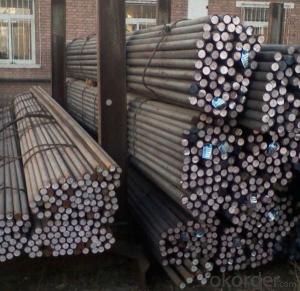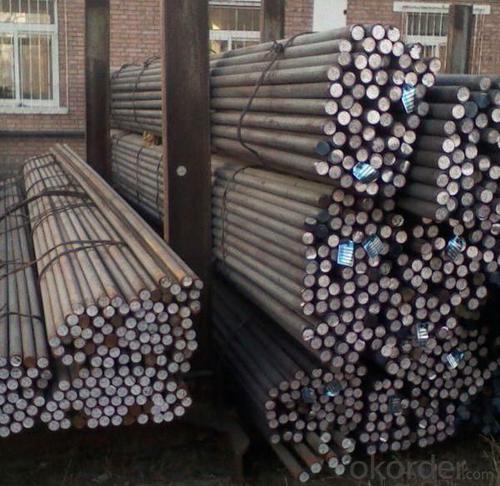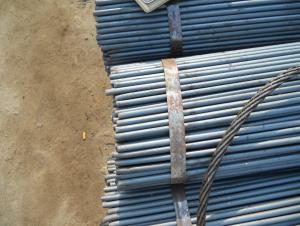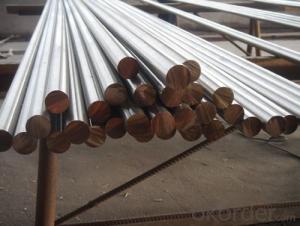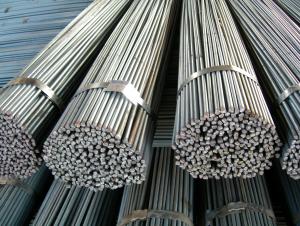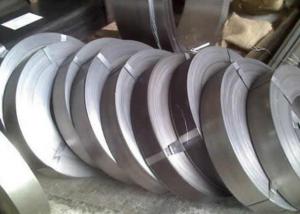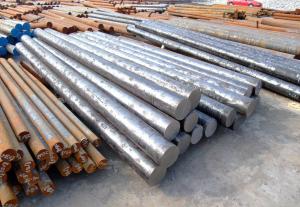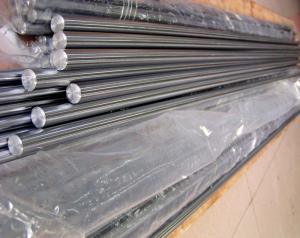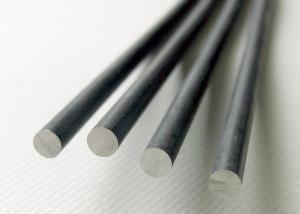Q195 Hot Rolled Carbon Steel Round Bars
- Loading Port:
- Tianjin
- Payment Terms:
- TT OR LC
- Min Order Qty:
- 25 m.t.
- Supply Capability:
- 50000 m.t./month
OKorder Service Pledge
OKorder Financial Service
You Might Also Like
Specification
Q195 Hot Rolled Carbon Steel Round Bars
Product Description:
1. Sizes: Diameter: 6mm-150mm; Length: 6m, 9m, 12m
2. Grade: Q195
3. Invoicing on theoretical weight or actual weight as customer’s request
4. Shape: Round bar, solid bar of steel with circular section
5. Technique: Hot rolled
Details of specification:
Diameter | Mass | Diameter | Mass | Diameter | Mass |
(mm) | (kg/m) | (mm) | (kg/m) | (mm) | (kg/m) |
6 | 0.22 | 22 | 2.98 | 53 | 17.30 |
7 | 0.30 | 24 | 3.55 | 56 | 19.30 |
8 | 0.40 | 25 | 3.85 | 60 | 22.20 |
9 | 0.50 | 26 | 4.17 | 63 | 24.50 |
10 | 0.62 | 28 | 4.83 | 65 | 26.00 |
11 | 0.75 | 30 | 5.55 | 70 | 30.20 |
12 | 0.89 | 32 | 6.31 | 75 | 34.70 |
13 | 1.04 | 34 | 7.13 | 80 | 39.50 |
14 | 1.21 | 36 | 7.99 | 85 | 44.50 |
15 | 1.39 | 38 | 8.90 | 90 | 49.90 |
16 | 1.58 | 40 | 9.86 | 95 | 55.60 |
17 | 1.78 | 42 | 10.90 | 100 | 61.70 |
18 | 2.00 | 45 | 12.50 | 120 | 88.85 |
19 | 2.23 | 48 | 14.20 | 140 | 120.93 |
20 | 2.47 | 50 | 15.40 | 150 | 138.82 |
Usage and Applications:
1. Q195 Hot Rolled Carbon Steel Round Bars is used in a large number of architectural and engineering structures. Or it can be used in construction of plants for the production of steel house frames, high-voltage transmission towers, bridges, vehicles, boilers, containers, ships, etc.
2. And we can use this kind of product on the performance of the mechanical parts if the demand is not very high.
3. Some especial material steel round bar can be used for main shaft of steamer, hummer shank, with big section and supper force.
Pruduct show:


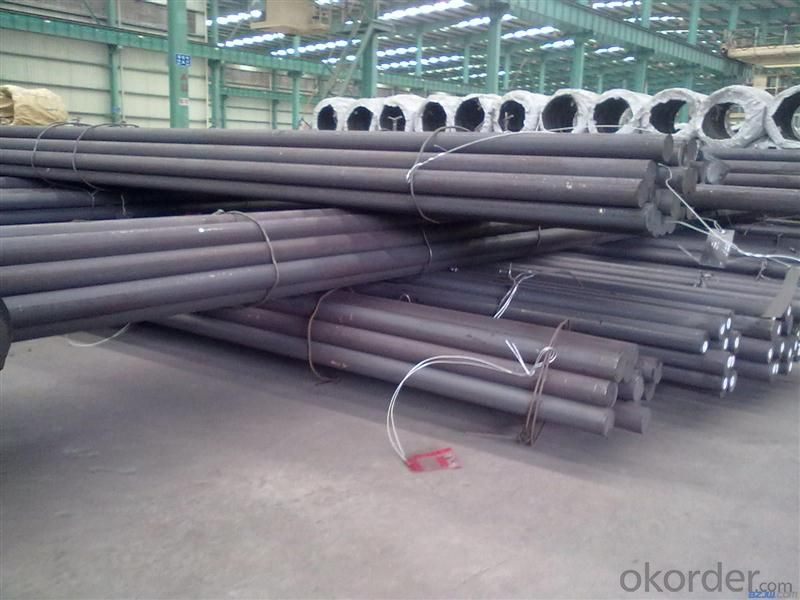
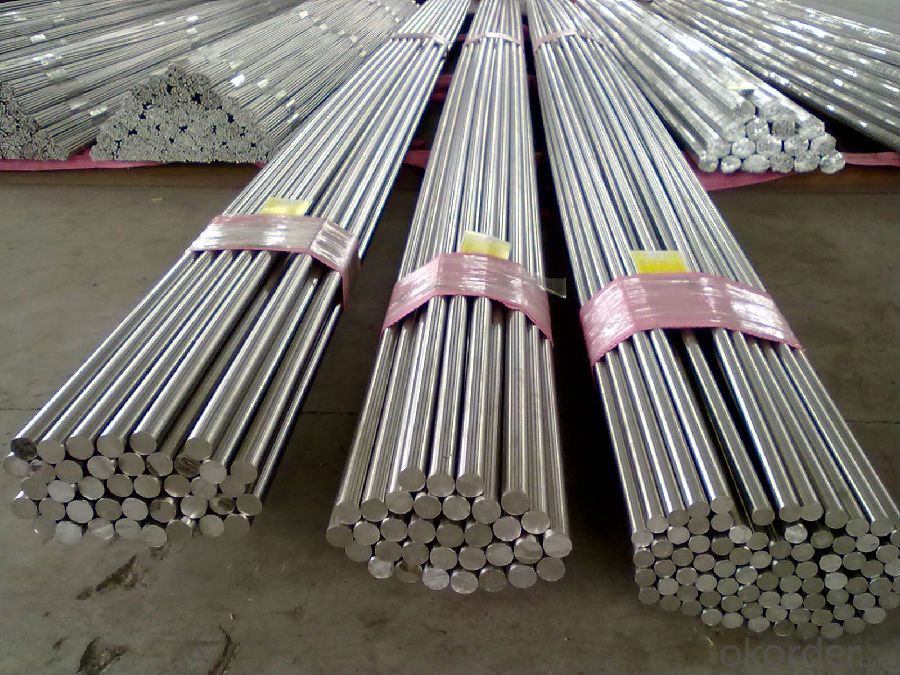
- Q: What are the main characteristics of heat-resistant steel forgings?
- High-temperature applications can benefit from the use of heat-resistant steel forgings due to their distinct characteristics. Firstly, these forgings possess exceptional resistance to oxidation and corrosion, enabling them to maintain their mechanical properties even under elevated temperatures. This resistance is achieved by incorporating alloying elements such as chromium, nickel, and molybdenum, which form a protective oxide layer on the steel's surface. Secondly, heat-resistant steel forgings demonstrate remarkable strength and toughness when exposed to high temperatures. This is crucial for applications that subject the material to mechanical stress and thermal cycling, such as gas turbines, power plants, and aerospace engines. The combination of high strength and toughness ensures that the forgings can endure harsh operating conditions without deformation or failure. Another significant characteristic of heat-resistant steel forgings is their ability to retain hardness and dimensional stability even after prolonged exposure to high temperatures. This is accomplished through meticulous alloying and heat treatment processes, optimizing the steel's microstructure. As a result, the material possesses a fine grain structure and high uniformity, enhancing its resistance to thermal fatigue and creep. Moreover, heat-resistant steel forgings exhibit good thermal conductivity, facilitating efficient heat transfer and dissipation. This is particularly important in applications where heat generation needs effective management to prevent overheating and damage to surrounding components. Lastly, heat-resistant steel forgings can be easily machined and fabricated into intricate shapes, making them versatile and suitable for various applications. They can be forged, machined, and welded without significant loss of mechanical properties, making them ideal for manufacturing components with complex designs and high precision requirements. In conclusion, the main characteristics of heat-resistant steel forgings include excellent resistance to oxidation and corrosion, high strength and toughness at high temperatures, dimensional stability and hardness retention, good thermal conductivity, and ease of machining and fabrication. These characteristics make heat-resistant steel forgings indispensable in industries that require reliable and durable materials in extreme heat conditions.
- Q: How does special steel resist oxidation at high temperatures?
- Special steel resists oxidation at high temperatures due to the presence of specific alloying elements and a carefully controlled manufacturing process. These alloying elements, such as chromium, nickel, and aluminum, form a protective oxide layer on the surface of the steel when exposed to oxygen in the air. This oxide layer acts as a barrier, preventing further oxidation of the steel. Chromium is particularly effective in forming a stable and dense chromium oxide layer, which acts as a self-healing mechanism. This means that if the oxide layer is damaged or scratched, it will quickly regenerate and continue to protect the steel from further oxidation. Furthermore, the manufacturing process of special steel involves precise control of the composition and heat treatment. This ensures that the steel has a fine and uniform microstructure, minimizing the presence of impurities or defects that could accelerate oxidation. Additionally, the steel is often subjected to various heat treatments, such as annealing or quenching, which further enhance its resistance to oxidation. Overall, the combination of alloying elements, controlled composition, and specific manufacturing processes enable special steel to resist oxidation at high temperatures, making it ideal for applications in industries such as aerospace, power generation, and petrochemical.
- Q: What are the main characteristics of wear-resistant steel?
- Wear-resistant steel, also known as abrasion-resistant steel, possesses unique characteristics that make it highly resistant to wear and tear. The main characteristics of wear-resistant steel include: 1. High hardness: Wear-resistant steel is typically hardened to a high level, which provides it with excellent resistance against abrasion, impact, and sliding wear. This hardness is achieved through processes such as quenching and tempering, resulting in a steel material that can withstand heavy loads and abrasive environments. 2. Exceptional toughness: In addition to high hardness, wear-resistant steel also exhibits exceptional toughness. This means that it can absorb impact and withstand heavy shocks without fracturing or breaking. This characteristic is crucial in applications where both abrasion and impact resistance are required, such as in mining equipment and earthmoving machinery. 3. Superior strength: Wear-resistant steel is known for its high strength, enabling it to withstand extreme forces and pressures. This strength is achieved through the use of alloys and heat treatment processes, resulting in a steel material that can withstand heavy loads and resist deformation even under intense wear conditions. 4. Excellent weldability: Wear-resistant steel is often designed with good weldability, allowing it to be easily joined or repaired using various welding techniques. This characteristic is significant as it allows for the fabrication of wear-resistant components and the repair of worn-out parts in a cost-effective manner. 5. Corrosion resistance: Some wear-resistant steel grades are also formulated to exhibit corrosion resistance properties. This feature ensures that the steel remains intact and does not deteriorate when exposed to harsh environments, chemicals, or moisture. This characteristic is particularly useful in applications where wear and corrosion occur simultaneously, such as in marine equipment or mining operations. 6. Extended service life: Due to its high hardness, exceptional toughness, superior strength, and corrosion resistance, wear-resistant steel offers an extended service life compared to other types of steel. Its ability to withstand wear, impact, and abrasion allows for reduced downtime and maintenance costs, making it highly desirable in various industries, including mining, construction, and manufacturing. Overall, the main characteristics of wear-resistant steel make it a reliable and durable material for applications where prolonged exposure to abrasive conditions is expected. Its unique properties ensure that it can withstand heavy loads, resist wear and tear, and maintain its integrity, ultimately leading to improved equipment performance and cost savings.
- Q: What are the different mechanical properties of special steel?
- Special steels exhibit a diverse array of mechanical characteristics that render them distinctive and well-suited for specific uses. Among the noteworthy mechanical properties of special steel are its exceptional strength, impressive toughness, commendable wear resistance, and superior corrosion resistance. Of all these properties, high strength emerges as a particularly crucial attribute of special steel. This inherent strength enables the material to withstand substantial loads and stress without succumbing to deformation or failure. As a result, special steel finds application in areas where the preservation of structural integrity and durability holds paramount importance, such as in the construction of buildings, bridges, and machinery. Another significant mechanical property of special steel lies in its toughness. This quality refers to the material's ability to absorb energy and withstand fracture when subjected to impact or sudden loads. Special steels possessing high toughness become indispensable in applications involving dynamic and high-impact forces, such as the fabrication of tools, gears, and machinery components. Wear resistance constitutes yet another critical mechanical property of special steel. It denotes the material's capacity to endure damage and deterioration caused by friction, abrasion, or erosion. Special steel boasting good wear resistance frequently finds employment in scenarios where it will be exposed to harsh conditions or repetitive mechanical actions, as witnessed in the manufacturing of cutting tools, dies, and molds. Of equal importance is the superior corrosion resistance offered by special steel. This mechanical property proves invaluable, particularly in environments where exposure to moisture, chemicals, or extreme temperatures looms likely. Special steels endowed with high corrosion resistance can withstand the adverse effects of oxidation, rust, and chemical reactions, rendering them eminently suitable for deployment in industries such as marine, chemical, and oil and gas. In conclusion, special steels possess a diverse range of mechanical properties that distinguish them from conventional steels. High strength, remarkable toughness, commendable wear resistance, and superior corrosion resistance represent a few of these key mechanical properties, rendering special steel the preferred choice for numerous industrial applications.
- Q: What are the main applications of special steel in the food processing machinery?
- Special steel is commonly used in food processing machinery due to its unique properties and benefits. The main applications of special steel in food processing machinery include ensuring hygiene and cleanliness, resistance to corrosion and wear, high strength and durability, and compatibility with food safety regulations.
- Q: What are the different methods of improving the fatigue resistance of special steel?
- There are several methods that can be employed to improve the fatigue resistance of special steel. These methods aim to enhance the material's ability to withstand cyclic loading and prevent fatigue failure. 1. Heat Treatment: One common method is to subject the special steel to heat treatment processes such as annealing, normalizing, or quenching and tempering. These treatments can alter the microstructure of the steel, improving its strength, toughness, and fatigue resistance. 2. Surface Treatment: Applying surface treatments like shot peening or surface hardening can significantly enhance the fatigue resistance of special steel. Shot peening involves bombarding the surface with small, high-velocity steel shots, inducing compressive stresses that counteract the tensile stresses during cyclic loading. Surface hardening techniques, such as carburizing or nitriding, create a hardened layer on the surface of the steel, which increases its resistance to fatigue. 3. Alloying: Modifying the composition of the special steel by adding specific alloying elements can greatly enhance its fatigue resistance. For example, adding elements like chromium, molybdenum, or nickel can improve the material's strength, ductility, and resistance to fatigue crack initiation and propagation. 4. Grain Refinement: Refining the grain structure of the special steel can lead to improved fatigue resistance. Techniques like severe plastic deformation or grain refinement through thermomechanical processing can promote the formation of finer grains, which reduce the susceptibility to fatigue crack initiation and propagation. 5. Microstructural Control: Optimizing the microstructure of the special steel can be achieved through techniques such as controlled rolling, controlled cooling, or precipitation hardening. These methods aim to achieve a desirable microstructural balance, such as fine dispersion of precipitates or a refined grain structure, which improves the material's fatigue resistance. 6. Residual Stress Control: Managing residual stresses within the special steel can help improve its fatigue resistance. Techniques like stress relieving or balancing residual stresses through appropriate heat treatment can reduce the likelihood of fatigue crack initiation and propagation. It is important to note that the specific method or combination of methods employed to enhance fatigue resistance will depend on the specific alloy and application requirements. Additionally, thorough testing and evaluation should be conducted to ensure the effectiveness of these methods in improving the fatigue resistance of special steel.
- Q: What are the requirements for special steel used in aircraft manufacturing?
- The critical nature of aircraft components and the demanding operating conditions they face necessitate stringent requirements for the special steel used in their manufacturing. Here are several key requirements that must be met: 1. Exceptional strength: To withstand the extreme forces and loads experienced during flight, special steel used in aircraft manufacturing must possess exceptionally high strength. This is crucial for maintaining the structural integrity and safety of the aircraft. 2. Lightweight: While strength is important, the special steel used in aircraft must also be lightweight. This is to minimize the overall weight of the aircraft, which in turn enhances fuel efficiency and allows for increased payload capacity. 3. Excellent corrosion resistance: Aircraft are often exposed to harsh environments, including high humidity, saltwater, and various chemicals. Therefore, the special steel used in their manufacturing must exhibit excellent resistance to corrosion. This helps to maintain the structural integrity of the aircraft and prolong its lifespan. 4. High fatigue resistance: Special steel must possess high fatigue resistance to withstand the repetitive loading and unloading cycles that occur during flight. This ensures that the components do not fail prematurely due to cyclic stress. 5. Heat resistance: The special steel should be able to withstand the high temperatures generated by the engines and the heat generated during high-speed flight. This prevents deformation, melting, or loss of strength under extreme thermal conditions. 6. Good weldability: The special steel used in aircraft manufacturing should have good weldability, which allows for efficient and reliable joining of components during the manufacturing process. This ensures strong and secure connections between various parts of the aircraft. 7. Non-magnetic properties: In certain applications, such as electronic systems, it is essential for the special steel to be non-magnetic. This is to prevent interference with sensitive equipment. 8. Traceability and certification: To meet industry standards and regulatory requirements, the special steel must have proper traceability and certification. This includes documentation of its composition, manufacturing process, and testing procedures to ensure consistent quality and performance. Meeting these requirements is vital to ensure the safety, reliability, and efficiency of aircraft. Before being used in the construction of aircraft components, the special steel undergoes rigorous testing, quality control, and certification processes to ensure it meets these stringent requirements.
- Q: What are the main challenges in machining special steel?
- One of the main challenges in machining special steel is its high hardness, which makes it difficult to cut and shape. Special steels often have high levels of carbon or other alloying elements, making them tough and resistant to wear, but also more challenging to machine. These materials require specialized cutting tools and techniques to ensure efficient and accurate machining. Additionally, special steels can generate high heat during machining, leading to thermal stress and potential distortion of the workpiece. Proper cooling and lubrication are crucial to overcome these challenges and achieve desired machining outcomes.
- Q: How does special steel perform in renewable energy applications?
- Special steel is a key component in various renewable energy applications and plays a significant role in their performance and durability. The unique properties of special steel, such as its high strength, corrosion resistance, and temperature stability, make it an ideal choice for use in renewable energy technologies. One of the major renewable energy applications where special steel excels is in wind turbines. Wind turbine components, such as the tower, rotor blades, and gearbox, require materials that can withstand harsh environmental conditions and high mechanical loads. Special steel alloys offer excellent strength-to-weight ratios, allowing for lighter and more efficient turbine designs. Additionally, their corrosion resistance properties ensure longevity and reduced maintenance requirements, resulting in increased reliability and overall performance of the wind turbine. In solar power applications, special steel is used in the construction of solar panels and support structures. Solar panels require frames made of durable material to withstand external forces and extreme weather conditions. By utilizing special steel, solar panels can be manufactured to be lightweight, yet strong enough to support the weight of the photovoltaic cells. Furthermore, the corrosion resistance of special steel ensures that the panels remain intact, even in harsh environments. Moreover, special steel is also employed in the production of hydroelectric power. In hydro turbines, the corrosive nature of water and the high pressure and temperature conditions necessitate the use of materials that can withstand such environments. Special steel offers excellent resistance to corrosion, erosion, and cavitation, making it a reliable choice for hydroelectric power generation. Its strength and durability ensure the turbines can operate efficiently and withstand the forces exerted by the flowing water. Overall, special steel performs exceptionally well in renewable energy applications by enhancing the reliability, longevity, and efficiency of various technologies. Its unique properties make it an indispensable material in wind turbines, solar panels, and hydroelectric power generation, contributing to the overall advancement and sustainability of renewable energy systems.
- Q: What is the tensile strength of special steel?
- The tensile strength of special steel can vary depending on the specific alloy and manufacturing process, but it is generally much higher than that of regular steel.
Send your message to us
Q195 Hot Rolled Carbon Steel Round Bars
- Loading Port:
- Tianjin
- Payment Terms:
- TT OR LC
- Min Order Qty:
- 25 m.t.
- Supply Capability:
- 50000 m.t./month
OKorder Service Pledge
OKorder Financial Service
Similar products
Hot products
Hot Searches
Related keywords
